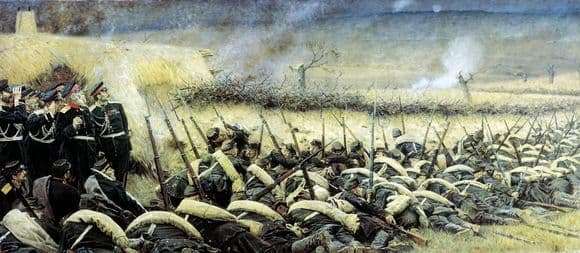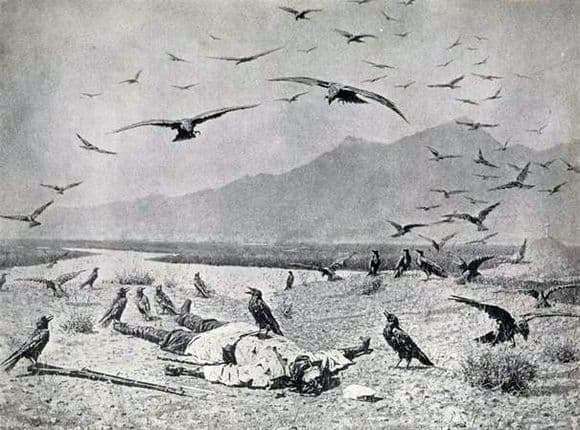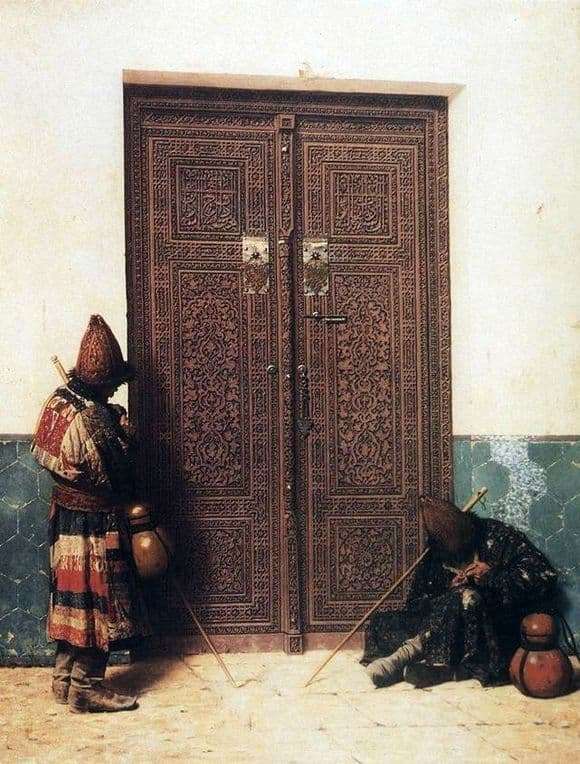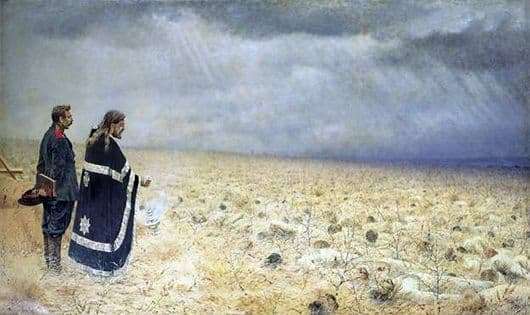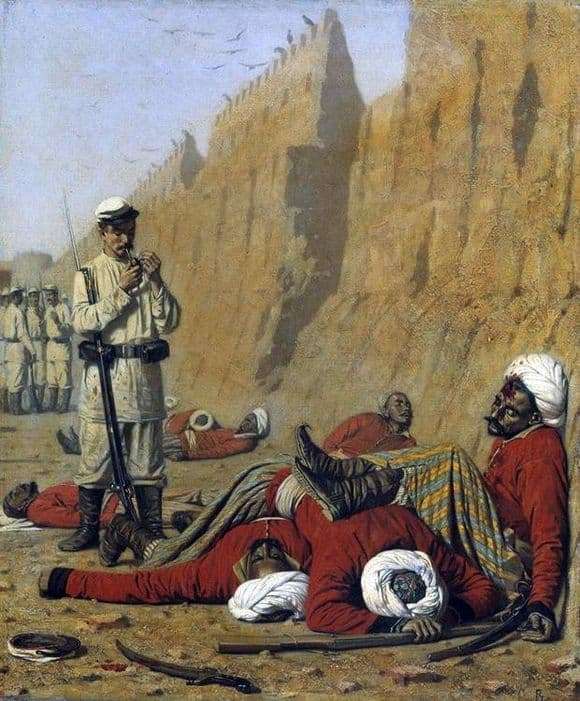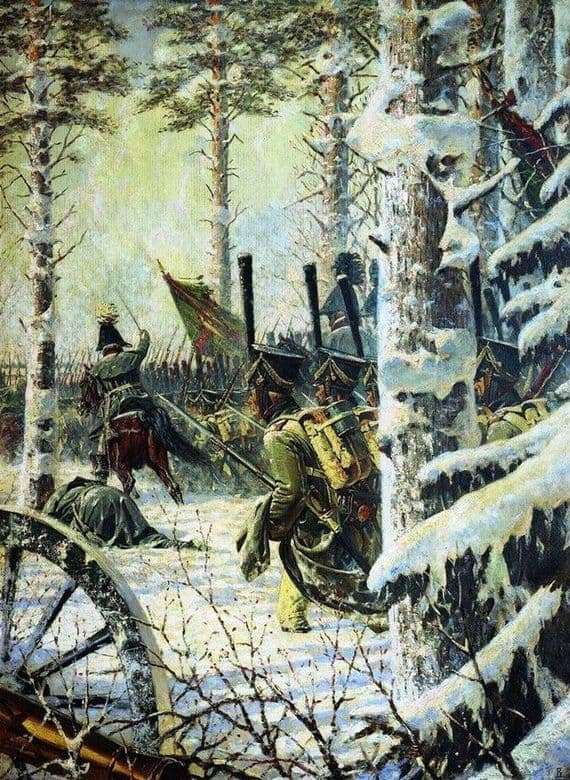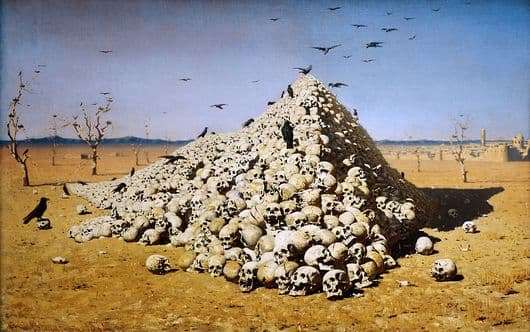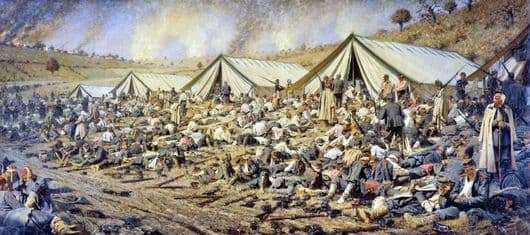
The painting was painted in 1878. Vereshchagin devoted it to a significant event: the assault on Pleven, in which a huge number of Russian soldiers were killed. The artist deeply empathized with the sufferings and heroism of the soldiers.
The canvas refers to the Balkan series of paintings, which the author created from 1878 to 1881 years. Vereshchagin was very worried about the harsh military reality, which was the reason for writing several cycles of pictures of military subjects.
The canvas “Under the Plevna” shows us heroism and a cruel existence during the years of hard war. In the background are tents in which wounded soldiers were received. A panorama in the distance shows the fire and smoke of a recent battle.
It is easy to understand that there was not enough space for everyone at the dressing station, and the exhausted soldiers were waiting for help lying on the ground. Someone else can walk by himself, some of the fighters are carried on a stretcher. Perhaps among them there are already dead.
Around burned, soaked with blood and suffering the earth. The sultry sun exacerbates the already difficult situation of soldiers. Weapons are everywhere. But who knows, maybe this is not the last battle and how much evil will still be shed in these places…
The artist depicted the harsh military reality without smoothing hard corners, showing the gravity and seriousness of the events in all their unsightly and merciless moments. Indeed, during the war years it was everywhere.
Vereshchagin, created the canvas with historical accuracy. For this, he studied a lot of documentation and specific material. He painted each soldier individually, so that there would not be identical poses or gestures. Vereshchagin was able to convey the depth of suffering and the power of the Russian spirit. The artist seemed to be there, near Plevna, next to the dressing station.
After 200 years, we can plunge into the thick of events and survive all the pain and heroism of Russian soldiers. Cloth Vereshchagin gives us the awareness and memory of the meaningful battle of Plevna.
Description of the painting by Vasily Vereshchagin “Under Plevna”
